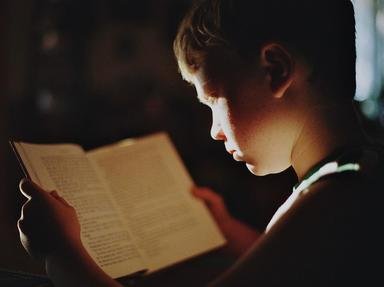Quiz Answer Key and Fun Facts
1. The third and final novel published during its author's life is based on her unrequited love for a teacher she met in while working in Belgium
2. This influential, often adapted novel was inspired by its author's real-life experiences in Italy during WWI
3. The protagonist of this autobiographical novel also appears in its author's much longer, "epic" masterpiece
4. This seven-volume novel, one of the longest ever written, is widely considered a fictionalized account of its author's life
5. Much of the plot of this early 20th-century novel is based on its "scandalous" author's close relationship with his mother
6. The story of Maggie, this novel's protagonist, echoes the author's plight after her relationship with a married man became public
7. The author's never fully disclosed homosexuality is reflected in this novella's main character's infatuation with a beautiful young man
8. Written in the early 1960s, this novel draws on its author's experiences as a budding writer, as well as her struggles with mental illness
9. Though based on actual events in the life of its author, this novel set in the South Seas has often been viewed as somewhat of a tall tale
10. Its author's favourite work, this famous novel reflects many of his experiences as a boy and a young man
Source: Author
LadyNym
This quiz was reviewed by FunTrivia editor
looney_tunes before going online.
Any errors found in FunTrivia content are routinely corrected through our feedback system.
